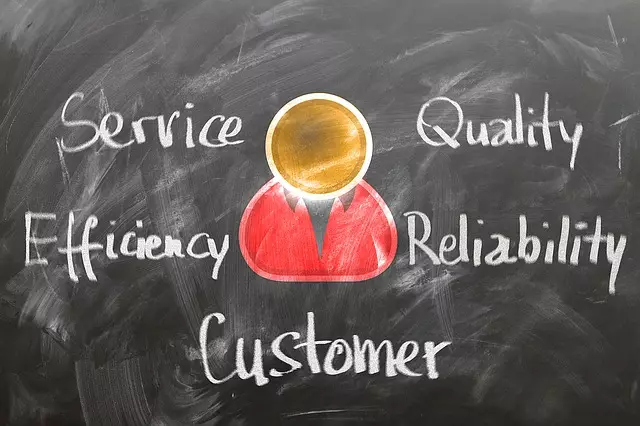
Once upon a time…
… in a land far, far away, a small subscription business was born. It steadily grew and bloomed, surrounded by the warmth of its creators, who were bold entrepreneurs. Nothing stood in their way and they all shipped happily ever after!
Lucky you, for you have just witnessed the birth of the first subscription business fairy tale! But, as tempting as it may sound, it’s also rather boring, right? Well, it’s time to face reality. It may be challenging, but it will undoubtedly be more exciting than fairy tales.
Running a subscription business is a journey filled with of ups and downs. Though some businesses tend to grow at a relatively solid rate, most of them do struggle, especially at the beginning. And that is perfectly normal.
Today, we are bearers of some news – good news and great news. The good news is that every business challenge has a solution, oftentimes more than one! The great news is – you’re about to discover those solutions to common challenges that one can face in a subscription business. How neat is that?!
Most common challenges faced by subscription businesses
- Pricing your offers (subscription boxes/products)
- Scaling the fulfillment operation
- Creating a monthly schedule of operations
- Creating amazing customer service
Surely there are more, smaller everyday challenges every subscription business owner faces, beyond these big ones we are going to explore now. Some of them are well known to non-subscription businesses as well – unexpected obstacles appearing in places you would never expect them to appear, constant gaps between what we know and how it looks in practice, and more.
If there are any other challenges you’d like us to cover, do let us know! Whatever you’re struggling with in developing your business, we’re here for you to provide practical solutions, tips, and advice.
Moving on, in this guide we are going to reveal the most common challenges of subscription business, focused mainly on monthly recurring offers (based on subscription boxes, as a main example).
Next, as these challenges can create serious drawbacks and significantly slow down your progress, our goal is to show you practical solutions to them. Luckily, there are solutions to every one of them, starting from (of course) smart planning and preparation, to financial juggling and time management.
Why are we doing this? So you can relax and avoid those drawbacks. So you can ship happily ever after!
Are you ready?!
Challenge no. 1 – Pricing
Is it just us? Or does pricing, funding, and financing in general always tend to cause a headache or painful teeth grinding? It seems that for every entrepreneur, initial idea making and brainstorming is always enjoyable, as well as design polishing, branding, prepping everything for a launch – exciting, exciting, exciting!
And then, wicked, wicked money comes in.
The main goal is often to get it all working in the most affordable way imaginable. And there’s nothing wrong with this! Sometimes, it is necessary to optimize (or over-optimize) all the aspects, so you can launch and begin your business altogether.
However, though it is absolutely important to stay within your budget in the beginning, there’s a catch.
A lot of subscription entrepreneurs do not devote enough time to the thing that will literally keep their business running smoothly – the price of their product.
Seems obvious, but it’s a commonly overlooked step. Why does this happen? No, it’s not the doing of a voodoo witch that craves for your business to fail (as far as we know at least). Instead, there are several possible reasons:
- Starting a business is a messy journey, to say the least – one can easily get distracted while putting out ongoing fires;
- Unexpected costs pop up and it’s difficult to consider them all ahead of time;
- Certain costs are underestimated – a common misstep in both product sourcing and shipping operations;
- Shaping the pricing structure (or even copying it) according to competitors – strikingly similar subscription businesses;
- Forgetting to leave a backup space in the budget, so important in the case that unexpected spending occurs (and trust us, it always does).
Signup & Try Subbly For Free
Overcoming the challenge: Pricing
In order to get an accurate view of your pricing, make sure that you did the additional investigations. It’s also a fine blend of careful planning, analyzing, and lots of calculations. Some of the ways to do some smart solutions may involve:
- Considering all the costs – seriously, ALL the costs possible!
- When it comes to calculations regarding a subscription product, they usually involve the sum of the product cost and fulfillment cost.
- The first part, product cost, is the total of the cost of actual products, the box, tissue paper or other packing material, everything else that the package contains. Plus, a little bit extra, in the case that something goes wrong.
- The second part, fulfillment cost, is the cost of packing processes and the actual shipping process.
- What you’re left after this is gross profit – if your box is priced $23 and the above cost comes to $19, your margin will be $4. The mistake most of the subscription business owners make is that they end their calculations here! Do the necessary math to save yourself from future headaches.
- Go a step further and calculate the cost of customer acquisition (or CoCA), but also all the operational costs, such as apps, hosting, costs of customer service platform, stock photos, design, etc.
Do not forget about other expenses – paying your employees and accounting services too.
Congrats, ‘cause you just made a step which most of business owners tend to skip (yes, it can be tiring, we know) and this wise move will certainly help you out. When you consider all the costs, you keep the healthy margin without all the additional expenses.
- Ignore your competitors and their pricing
- Your business is unique. True, it possibly fits into a niche where other similar businesses co-exist. Sure, there are other ventures who share the same goals with you, or even target the same market.
- But, your business is one of a kind, shaped by your peculiar visions, running with your specific energy. As soon as you grasp this, it will become easier for you to grow your business, because… it makes pricing surprisingly easy! How?
- Your competitor’s pricing might seem fine from your standpoint, especially if this is the first time you’re launching a subscription business. Everyone seems to know what they’re doing, right? Well, this often couldn’t be further from the truth.
- One of the most common mistakes fresh entrepreneurs make is just focusing on their competitor’s pricing structure and building their own based on these observations. Oops, caution – your competitors might not have a clue what they’re doing either.
- That’s right, their pricing system could easily be poorly built. Plus – it’s built under different circumstances than yours.
- We recommend not falling into this trap. Simply ignore your competitors during the ‘warming up’ phase of your subscription empire. Using their pricing system could leave you with an unsustainable plan, and that’s exactly what we’re trying to avoid here.
Even if your competitors seem like lasting, stable businesses (though everything is often different behind the curtains) – just simply mind your own business… literally.
- Do not underestimate your overall costs
- It is not enough to merely consider all the costs. You must also NOT underestimate the growing and always changing sum that awaits you as your business evolves.
- By following the guidelines we already covered in the first set of bullet points, you’ll surely feel confident about those shiny numbers you have. But do not forget that these are only assumptions.
- It’s a bit of a harsh truth, but nothing beats the experience.
- That’s right, you’ll need to proactively either confirm or deny all the assumptions about pricing. Call it test investing (maybe you have a better name, then call it that) and be ready for some (hopefully) small surprises.
- No matter how precise your pre-calculations might be, real-life business experience brings unexpected twists and turns.
Well, how could you do this test investing, without risking too much?
Let’s begin with product sourcing:
- Step 1 – make a list of particular companies whose products you’re considering to include into your boxes (or crates, bags, envelopes, whatever your packaging of choice might be);
- Step 2 – reach out to one or two companies on top of your list, present yourself, your brand and how you could both benefit from the partnership;
- Step 3 – if their reply is positive, then ask them about pricing – what kind of pricing could they offer you and name which items you’re interested in, including the quantity;
- Step 4 – if their answer is polite, detailed, and informative, move on to negotiating (this is a sweet opportunity for you to practice negotiation without even paying a dime!) about the prices and make sure that your potential supplier gives you as accurate of a quote as possible;
- Step 5 – suggest to do a small test and begin your cooperation with a smaller quantity of products (and cheaper products);
Well done! Now, let’s see how the actual test investing looks like:
- Once you are in possession of a great offer from your potential supplier (and do not go for anything less than great here, unless your niche is so narrow that you’re not left with many options), it’s time to order the smaller quantity of products and test your pricing/spending in action.
- Next, choose an adequate box size for the products you picked (make sure you nailed the design, procurement, and all processes related to packaging). Do this part seriously and thoroughly, so you can calculate all the possible costs in the end. Do not skip steps. Besides the size of the box, acknowledge the potential average weight of the box as well.
- Then, consider other factors related to shipping, such as zones or shipping areas, as those could majorly influence your total spending.
- Finally, ship the test batch of subscription boxes and calculate everything (and we really mean – everything) you spent along the way. This will make sure that your costs are not underestimated. Afterwards, you’ll be ready to make a reasonable pricing plan.
The end goal is to make a profit, and smart pricing will ensure that that happens. Test – invest (small) – analyze and optimize – go big.
- Always leave a backup space in the budget
- You might have noticed the pattern in this pricing section – manage your investment in a way that keeps your business going despite unexpected spending. We covered the precautions such as considering all the costs, ignoring your competitors’ pricing, and minimizing the risk of overspending with simple test investing.
- Now, let’s wrap up this pricing section with – leave a safe space in your budget.
- This kind of wise attitude, “always have a backup amount”, comes in handy if certain errors or simply additional costs pop up. Creating a monetary safety net will also save you from a lot of stress.
In general – use every chance possible to create more security in your business, as much as it’s possible.
- Keep your eyes on the churn
-
- What is churn?
It’s basically a percentage of subscribers who cancelled in a certain period of time. Painful subject, we know, but equally important. So, there is no retained profit if your customers don’t stick around long enough. - How can you calculate the churn?
This simple formula might help:
Customers who cancelled (in a given period) ÷ Total active subscribers (in the same period) = Churn %
- What is churn?
- As an example, if the churn % you calculated is 5% or less, than congratulations, because only the very best subscription businesses report statistics like that. On the other side, if your churn is 15% or more, it’s a sign that too many customers are leaving and your growth will be harder.
- As you might guess, there’s no point of doing this calculation if you’re just starting out, as you need at least 6 months and a considerable number of subscribers to even start thinking about churn.
- Is it possible to reduce churn with smart pricing?
Definitely. The solution is simple, but tricky to execute: your subscribers will stay if you’re providing enough value to through the service. Meaning, besides great products, your pricing needs to be aligned with the value and/or usage of those products.
It’s a matter of fine balance between providing value and charging appropriately. You can find out more about this complex topic here.
The art of pricing, when you look at it now, is not so complicated. True, a lot of things need to be considered, but that seems to be the main point – observe the whole picture, look ahead, and rethink the steps, way before you actually make them.
And the bottom line, which will both calm you and liberate you – is to ignore what others are doing and how they are doing it.
Your business is unique, the same as you, its creator, are unique. Treat it accordingly and the pricing will emerge, naturally and consequently.
Challenge no. 2 – Scaling Fulfillment Operations
Are you a bit tired from all the pricing, costs, and investing talk? We understand. But, your awesome business deserves this.
Learning can be tricky to endure, above all daily occupations, but believe us, it’s going to be worth it! Nothing compares to that feeling of power, control, and success when your business grows and evolves, day in and day out.
Therefore, take a deep breath and dive into the wonders of scaling with us! Here it goes.
Obviously, scaling fits into step 2, because it’s pretty impossible to scale something if you don’t have anything to scale, right? And it surely is challenging to scale a fulfillment process. But at the same time – this process has a huge scaling potential.
In order to painlessly expand from 10-100 monthly boxes to 1,000 and even 10,000 (it is possible, stick with us!), a subscription business mastermind must invest a lot of time, energy, and ideas, but must also make a lot of errors throughout the journey.
Luckily, there are ways to manage it all to keep fulfillment running smoothly and efficiently over a long period of time. Not to mention that these tips you’re about to discover will also help you save money and improve quality.
Everybody in the house say: Yeaaah! (metaphorically).
Overcoming the challenge: Scaling
Have you read one of our most amazing posts about how to save money on shipping? If you haven’t yet, head over there, read it carefully, and then come back here to ensure you get it all right to expand the idea.
So, back to scaling your fulfillment process.
First, what is fulfillment? According to the almighty BusinessDictionary, fulfillment in general is a “process of taking an order and executing it by making it ready for delivery to its intended customer. It may involve warehouse pickup, packaging, labeling, etc.”
Well, a mere look at this quote shows us how important this step is, for any subscription business. Hence, the process of fulfillment deserves your full attention, because if it’s not managed properly, the final product/package your subscriber will receive will be everything but enjoyable.
Do we want that? Of course we don’t.
As you know, (if you read that guide about shipping, and we know you did) outsourcing is definitely one of the suggested options here. If you choose to outsource your fulfillment, it could save you a lot of money and provide more control.
When a trusting, reliable, high-quality service handles your fulfillment, the quality of packing should be correspondingly good.
Yes, it takes time and searching and a lot of negotiating to create a strong partnership where both sides are happy. Still, you are the creator, a mother and a father to your subscription business, and nobody knows it better than you.
But, by letting someone else cover fulfillment operations, you’ll free up some time to focus on growing your promising enterprise. It is perfectly alright, even recommended, to find services that will handle some (not all) parts of “running the business”, so you can catch a breath and think about the future of your company.
Signup & Try Subbly For Free
Okay, Subbly, what if I don’t want to outsource my fulfillment?
There are plenty of options to untangle this challenge if you’re not in the mood for outsourcing and wish to take charge of the fulfillment process internally. Here are couple of smart actions you can make:
- Create a reliable team – This is always a tricky one, and it usually depends on what you consider as reliable, but the truth is, a good team of trustworthy people is a strong engine for every business.
When it comes to fulfillment (and scaling upon it) in particular, you’ll definitely need a good warehouse manager. What do warehouse managers do, except enjoy the cool job title?
They are responsible for a multitude of actions, such as keeping track of all the products, regarding their condition, quantity, safety, and all other imaginable information about them.
Next, in order for everything to be nicely packed, you’ll need a dependable packing manager (another manager? Yes, they’re known to be good at managing stuff). What is their job? They conduct the entire packing process, ensuring that all teams of packers do their job well and that everything runs as smoothly as silk.
Lastly, of course, you’ll need a fast and skilled packing team. Most of the boxes (or any other kind of subscription packages) contain more than 5 products. Knowing this, a limited number of people can do the packing and do it fast, so often it’s preferable to create smaller teams.
Having a relaxed, hard-working, and focused team certainly makes everything easier.
- Prepare, prepare, and then prepare some more – some of the things you could do in this phase are:
- Pre-fold the boxes (or some other kind of packages you have)
- Keep the fulfillment area as clean and as neat as possible
- Remove all the obstacles that might slow down the actual packing processes and stocking of the packing material. It seems like a lot, but it can soon turn into a habit. All these small, yet significant actions will prevent errors, delays, and line holdups all through the packing.
- Plan ahead with a monthly calendar – ah, this is a smart one – if you’re a planning and organization freak, you’re going to love this one! So, how to use the best of monthly calendars? Firstly, determine all the deadlines, small and big ones and enter them all clearly into the calendar. Focus on dates connected with the arrival of products, counting them, when they’ll be stored. Place the reminders accordingly.
Then, move on to actual packing days and all the schedules around them. Add the information about staff, the number of people you’ll need for all those actions and also, if you need to contact someone in order to get things going, add a small memo for that as well.
Voila, what a nice, highly informative, and useful calendar. Well done! - Separate your work stations – the last thing you need to cover if you’re handling the fulfillment process (and trying to scale it) internally is to make sure that you have pre and post-line work stations. Keeping this purely physical part of fulfillment is vital for every subscription business.
Why, oh why, Subbly?
Well, you’ll need a space for folding the boxes, a space for putting labels on them, and a space for the actual packing processes. This way, everything will run nicely and you’ll avoid all the possible deadlocks.
Challenge no. 3 – Monthly Schedule of Operations
Closely connected to our all-time favorite tool, the calendar – our topic now is how to get into a healthy rhythm of operations.
From month to month, every subscription business boss faces various challenges, especially as the firm starts to grow. And the show must go on, every single month, because delays may cost a lot (literally).
Let’s confront the common challenges of scheduling:
- Finding and ordering products
- Creating, printing, and delivering the packing list
- Managing fulfillment and shipping operations
- Ordering various materials
- Organizing the staff, from schedules, responsibilities, payments, etc.
- Handling re-billing, segmenting your customers, controlling the cash flow
- Running customer service, solving refunds, replacements, answering to requirements, and similar
- Finally, in order to ensure that your business will thrive – promote, advertise, and sell your boxes on social media, through emails, blogging and different campaigns.
We admire you. Seriously, look at this, and it is only a fraction of things you do! Give yourself a pat on the back and a “Well done, bravo, good job!”. Take a deep breath and relax – rest assured, we’ll do our best to help you out.
Keep on reading, this is only going to get better.
Overcoming the challenge: Overwhelming schedules
- Split responsibilities – This is a big one.
If you wish for your business to flourish, and of course you do, at some point it gets tiring to run it as a one-man or one-woman army. This doesn’t mean that you’re not doing well, it is simply the nature of entrepreneurship.
There is no shame in asking for help at this point, friend.
You may want to consider a business partner, if you don’t have one already, and split the responsibilities as operations evolve. The same goes for the team of people working for you, choose wisely and set reasonable expectations, both for yourself and them.
State all the requirements, expectations, and deliverables clearly and you’ll see significant progress. - Mighty calendars strike again! – This is an even bigger one.
We already mentioned how making a great calendar can help with the fulfillment. Do not underestimate the impact a clear calendar can have on your entire business management process!
While creating powerful calendars, think both widely and locally. Grasp the big picture, such as your monthly or even yearly plans. Then, narrow it down to weeks. Finally, if needed, structure your days as well.
Below is an example of a weekly schedule that would undoubtedly ease your feelings of being overwhelmed:
-
- Week no. 1 – brainstorming about products and finding them
- Week no. 2 – creating a list of products, crafting an order, ordering
- Week no. 3 – making sure that everything’s ready for fulfillment
- Week no. 4 – actual fulfillment and shipping + preparations for customer service tasks that are rising on the horizon.
Pretty clear, right? Bear in mind though that recurring tasks such as marketing efforts, general customer service and communication do not have to be included in these plans. Daily tasks would only make the calendar unnecessary crowded and your already busy mind confused.
But, this is where daily tasks go:
-
- Daily reminders – Throughout the day, we all need a reliable system to keep us from multitasking (which usually leads nowhere, in the long run), delays, and mistakes. Keep yourself on track with simple, short, buzzing task reminders.
Another big piece of advice is to go offline once in awhile, because the constant buzzing of alarms might lead to future anxiety (not that we know).
On your usual working days, set some clear and reasonable goals for the day (during the evening for the next day) and create alarms for when those should be finished. Consider breaks and/or additional deadlines if needed.
Set a nice, pleasant, but noticeable sound and get all that stuff done!
- Daily reminders – Throughout the day, we all need a reliable system to keep us from multitasking (which usually leads nowhere, in the long run), delays, and mistakes. Keep yourself on track with simple, short, buzzing task reminders.
- No multitasking allowed – Sorry busybees, but it’s scientifically proven that doing multiple activities at the same time brings poor results and even causes damage to your brain. It might feel like you’re making faster progress when you answer emails, research and chat at the same time, but the truth is – no. We don’t like it either.
So, do your best to focus on one task until it’s complete (or until it’s time to make a break).
Challenge no. 4 – Providing Amazing Customer Service
Happy customers = successful business. True, it’s more complicated than that, but wait, honestly, is it? If you’re able to satisfy your customer’s needs by providing a high-quality service, picking the most amazing products they’ll actually enjoy and getting those products to them consistently, is that how your business will grow?
Yes and yes!
Your subscribers are the flesh and blood of your subscription business. We see businesses fail all the time, when too much time, energy, and money goes into branding and overthinking internal processes. Not enough energy is left to simple and masterful customer service to satisfy their subscribers’ needs.
We don’t want you to make the same mistake. The connection you’re forming with every person that subscribes to your astonishing boxes is a relationship. Much more than that, it’s a commitment to the on-going, lasting service built on trust, interest, and shared values.
Subscribers expect superb support and smooth communication with you (your business) from the very beginning, so let’s make sure that they get nothing less than that!
These are the elements of a proper customer service process:
- Quick replies to customer messages – in order to do this right, try to keep your response time to any question, suggestion, or inquiry within 24 hours (on working days). And of course, do your best to be as helpful as possible in any way you can.
- Alerts for received emails – once you received an email from your subscriber, they should know that it safely arrived in your Inbox and that it’s being carefully reviewed; set an automatic message that let’s them know about this.
- Cover social media too – go beyond emailing and treat all inquiries equally. When your subscribers or potential subscribers leave a message or a comment on any of social media channels your business has, make sure the communication flows both ways there too;
Pro tip – do not forget about blog comments, if you have one.
- Consider a third-party customer service options – additional tools, such as automatic fill-in response messages or sorting solutions for your filters and list, can come in handy and cut response time; whatever you can automate, go ahead and automate it. Whatever you can do to run your business smoothly every day, go ahead and do that, because it will pay off.
- Create clear instructions – this part also fits into a communication/customer service section, because every chance you have to connect with your subscriber is a potential relationship builder. Start with a crystal clear FAQ page with comprehensive explanations on how to use your services and consider adding some self-service solutions as well, if your customer needs to change an address for shipment and similar.
Why is communication so important?
Good customer service and smooth overall communication can help with retention. Making yourself visible to your customers is highly recommended. But be careful not to cross the line and step into spamming. Update your customers regularly, but beware of overdoing it.
The best way to determine the right amount communication is to observe your competitors. You should also, however, think about the services you love yourself – how do they do it so well?
Remember, it’s nearly impossible to acquire loyal customers without solid communication.
Final thoughts and moving forward
Have you faced any other challenge in starting a subscription business? Let us know and we’ll do our best to get the answers, solutions, and even more tips!
Do you know any secrets of running a successful subbox entreprise? Let us know about that as well and we’ll gladly add it to our blog so we can make it accessible to every business newbie! It’s our pleasure.
Signup & Try Subbly For Free
Subbly – the purpose built platform for starting and growing subscription businesses
























